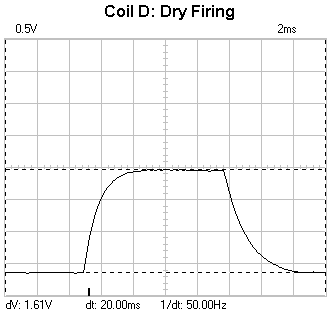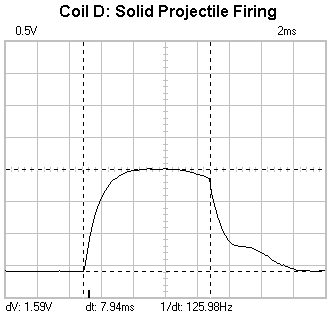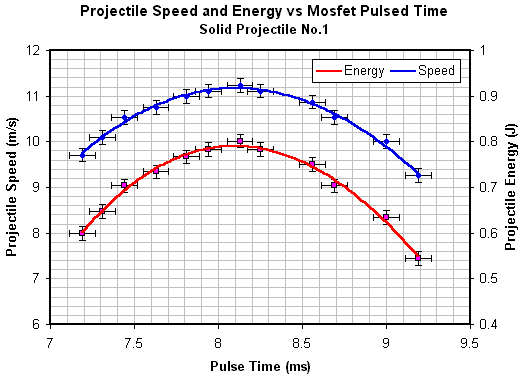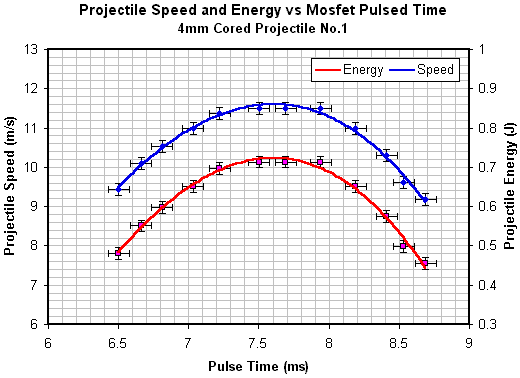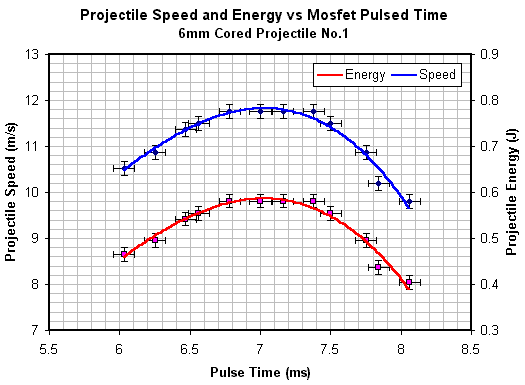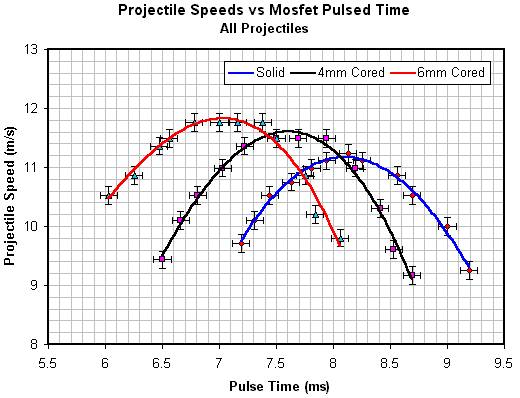
|
Open Loop Pulse Triggering Results Coil D Looking at the data on coil D we find that the wire diameter is 1.5mm. Using a wire current of 160A results in a wire current density of 90.5Amm-2 and a coil current density of 71.1Amm-2. These current densities are larger than those in any of the previous coils.
Fig 1. Coil current during dry firing
Fig 2. Projectile interaction with coil
Fig 3. Solid projectile speed and energy data
Fig 4. 4mm cored projectile speed and energy data
Fig 5. 6mm cored projectile speed and energy data
Fig 6. Projectile speed comparison
Coil Efficiency Table 1 shows the tabulated efficiency data.
Table 1. Energy and efficiency data
The peak power has now reached four times that of coil A. 3.5kW may seem like a lot but a supersonic coilgun will probably run with a peak power of the order of 100's of KW. Looking at the efficiency data there seems to be a pattern in which the solid projectile yields the greatest efficiency although it is always the slowest. The speed pattern is evident with all the coils. The efficiency pattern started to appear with coil C and may be an artifact of the more powerful coils although drawing conclusions from a small data set is generally not a good idea. The next section looks at the differences between the coils in a little more detail
|
|


